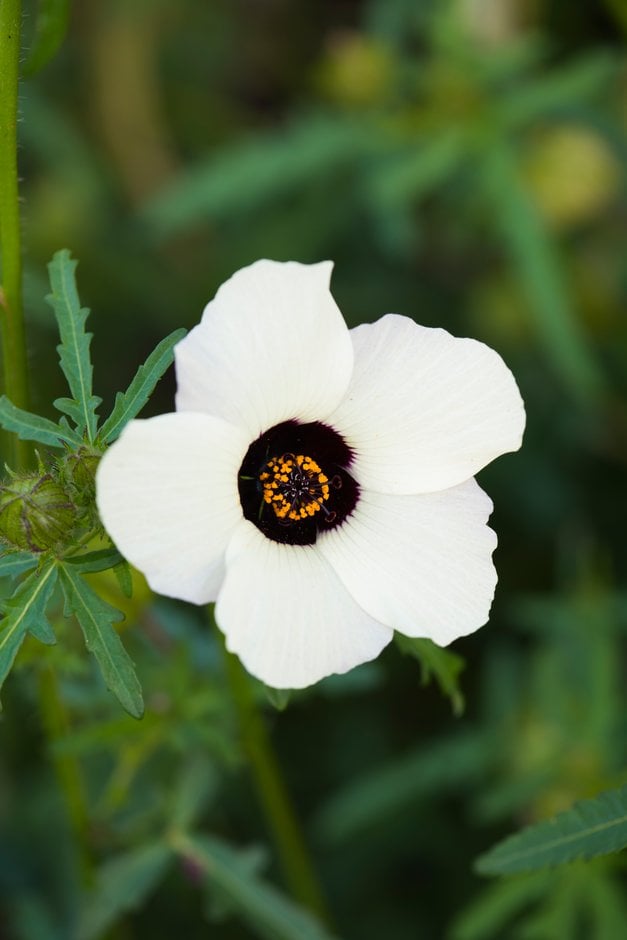Hibiscus trionum
black-eyed Susan
An upright annual, to 60cm tall, with oval, serrated leaves. The creamy-white or pale yellow flowers, with purplish-brown centres, are borne from late summer to early autumn and followed by bladder-like seed capsules
Other common names
bladder hibiscusbladder ketmia
see moredevil's head in a bush
flower of an hour
flower of the hour
goodnight at noon
modesty
trailing hollyhock
Venice mallow
Venus's mallow
African ketmia
Synonyms
Hibiscus africanusSize
Ultimate height
0.5–1 metresTime to ultimate height
1–2 yearsUltimate spread
0.1–0.5 metresGrowing conditions
Moisture
Well–drainedpH
Alkaline, NeutralColour & scent
| Stem | Flower | Foliage | Fruit | |
| Spring | Green | |||
|---|---|---|---|---|
| Summer | Brown Cream Purple Yellow White | Green | ||
| Autumn | Brown Cream Purple Yellow White | Green | ||
| Winter |
Position
- Full sun
Aspect
South–facing or West–facing
Exposure
Sheltered Hardiness
H2Botanical details
- Family
- Malvaceae
- Native to GB / Ireland
- No
- Foliage
- Deciduous
- Habit
- Columnar upright
- Genus
Hibiscus can be deciduous or evergreen shrubs, trees, annuals or perennials, with simple or palmately lobed leaves and large, funnel-shaped flowers over a long flowering season
- Name status
Correct
- Plant range
- Africa, SW Asia
How to grow
Cultivation
Plant outside when threat of frosts has passed and grow in a well-drained soil in full sun
Propagation
Propagate by seed
Suggested planting locations and garden types
- Cottage and informal garden
- Sub-tropical
- City and courtyard gardens
- Patio and container plants
- Flower borders and beds
Pruning
No pruning required
Pests
May be susceptible to aphids, scale insects, mealybugs and glasshouse whitefly when grown under glass
Diseases
May be susceptible to honey fungus (rarely) and powdery mildews
Love gardening
Sign up to receive regular gardening tips, inspiration, offers and more
View our Privacy Policy
Get involved
The Royal Horticultural Society is the UK’s leading gardening charity. We aim to enrich everyone’s life through plants, and make the UK a greener and more beautiful place.
